Healthcare is a complex ecosystem composed of various types of data. Patient health records, medical images, research insights, operational and financial data — this is just a fraction of what medical professionals deal with. However, only proper data management in healthcare can ensure the potential of this information is fully harnessed.
Implementing effective data management methods empowers healthcare professionals to effortlessly search, access, retrieve, and leverage medical information — and thus make better, more informed decisions. The value of data management goes beyond improving operational efficiency: it truly benefits patient care and propels research advancements.
In this article, we explore the best data management practices and how they can help organizations ensure the accuracy, security, and accessibility of healthcare data. We also turn to our experience in the field to dive into data management challenges and share tips on tackling them and minimizing the risk of medical data breaches.
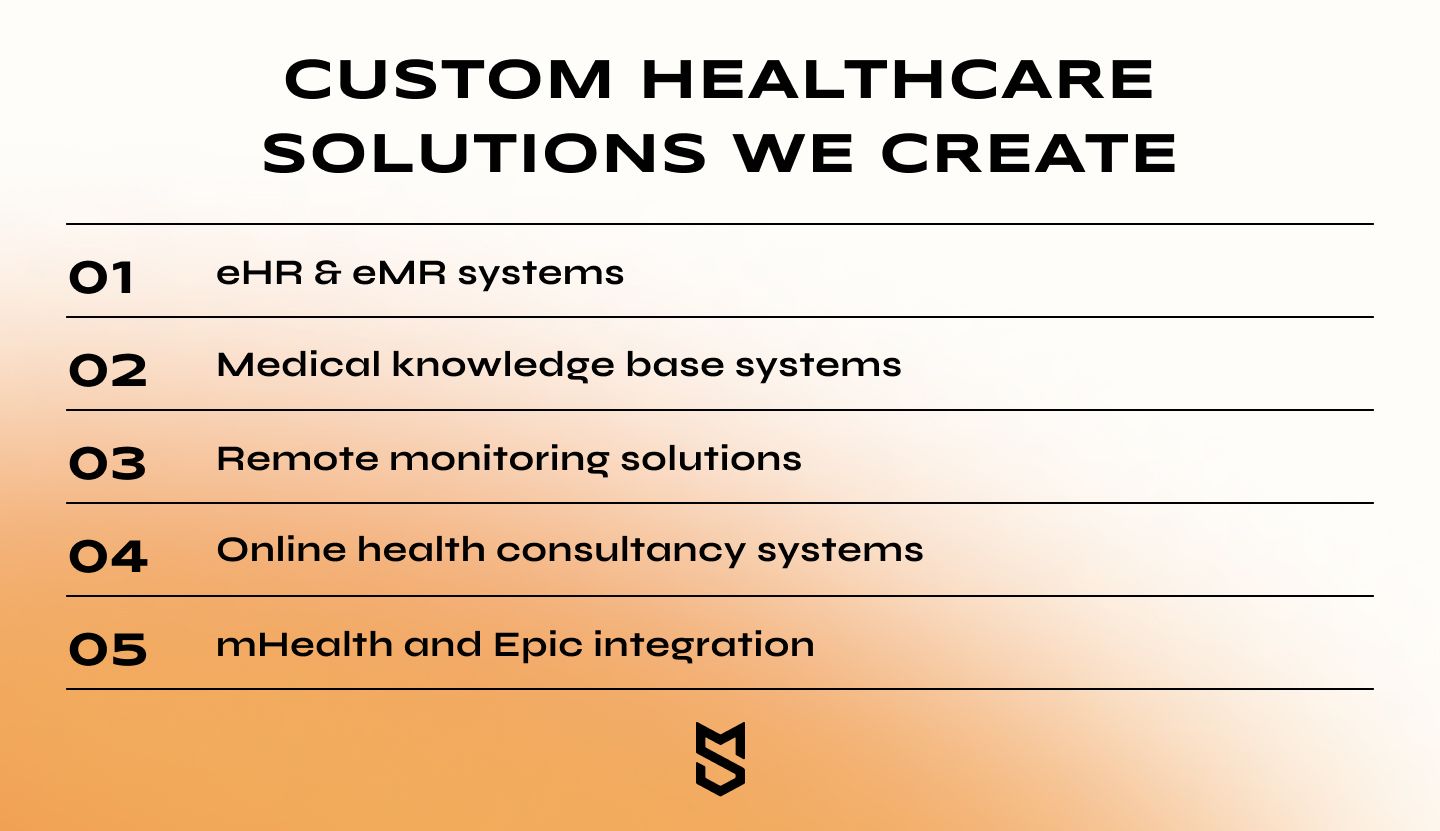
Understanding healthcare data management
Healthcare data management is the systematic process of handling, storing, protecting, analyzing, and utilizing data from different sources. The end goals here are to support informed decision-making, enhance individual patient care and population health management, enable clinical research, and to ensure compliance with regulations while protecting patient privacy.
Think of data management as a doctor's medical bag. Inside it are various medical instruments, medications, and tools for diagnosing and treating patients. Effective data management involves ensuring that each tool is accurately labeled (data accuracy), organized for easy access (data organization), protected from contamination or misuse (data security), and quickly retrievable when needed (data retrieval).
Dealing with misdiagnoses and incorrect treatments, putting patients’ safety at risk, missing research opportunities, and facing a lack of accountability is the tip of the iceberg we would collide with if the healthcare industry didn’t embrace data management standards. And even though today it’s an integral part of healthcare processes, medical data is still vulnerable to threats related to security.
According to Security Intelligence, the healthcare industry experienced a 250% rise in breach numbers from 2011 to 2021. And though the Fortified Health Security 2023 Horizon Report showed that the number of breaches slightly decreased in 2022, the healthcare industry remains the costliest industry for a breach (at $10.1 million on average).
The highest number of data breaches (78%) is caused by hacking and IT incidents, followed by unauthorized access, theft, loss, and improper data disposal. This, however, doesn’t mean healthcare organizations and health tech companies don’t follow data management guidelines.
No system is 100% immune to security threats due to human errors, insider threats, and cyberattacks that are getting more advanced. However, proper data management practices, along with the proactive and adaptive approach to cybersecurity, significantly mitigate the risk of breaches.
Key components of healthcare data governance
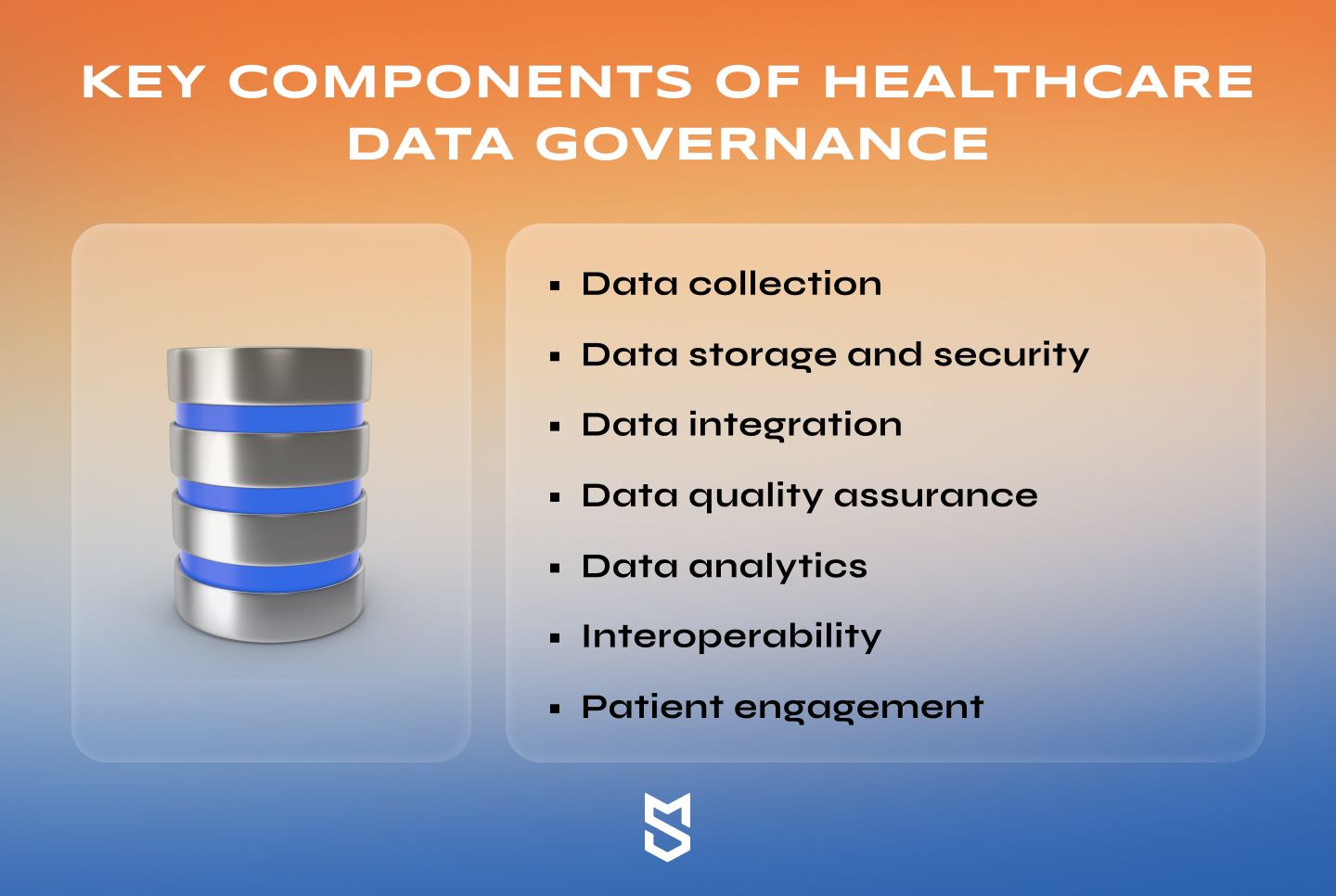
Healthcare data management is a complex system consisting of several components that together have to work like clockwork to help ensure the accuracy, accessibility, and privacy of healthcare information. Here are the key elements essential to healthcare data management and what they entail.
- Data collection. Gathering accurate and relevant data from various sources, including EHRs, medical devices, and patient interactions.
- Data storage and security. Implementing secure data storage solutions, such as encrypted databases and EHR systems, stringent access controls, intrusion detection systems, firewalls, etc.
- Data integration. Incorporating data from different sources to create a comprehensive, holistic view of a patient's medical history for better care coordination.
- Data quality assurance. Conducting regular data validation processes to ensure data accuracy, consistency, and reliability.
- Data analytics. Utilizing advanced analytics tools to extract valuable insights, predict disease trends, and optimize resource allocation.
- Interoperability. Ensuring that different healthcare systems and software can communicate and exchange data seamlessly and safely.
- Patient engagement. Allowing patients to access their health records via portals or EHRs for patient-centered care.
The list above is not exhaustive: data management for healthcare often also encompasses other components like disaster recovery and backup, data auditing, data ethics, healthcare staff training, and more.
Benefits of healthcare data management
Well-arranged data management systems can empower every professional involved in the healthcare ecosystem, from medical workers and patients to policymakers. And while there are dozens of benefits of this process, here we focused on the most common and significant ones for healthcare organizations.
Proactive care and enhanced patient engagement
Leveraging comprehensive health data through analytics and management tools gives healthcare professionals (HCPs) a holistic view of a patient's health history and current status. As a result, they can facilitate patient-centric care.
How does it work in real medical environments? Let’s say medical professionals treat a patient with a family history of cancer. In this case, the team can identify an elevated risk for certain types of cancer through data-driven analysis of the patient’s health records, lifestyle details, and genetic markers.
With convenient data management systems, medical professionals can easily access all the relevant data, extract insights from it, and create a proactive care strategy with personalized screening schedules, genetic counseling, and other preventive measures. Such an approach benefits both HCPs and patients, making preventive medicine even more widespread.
To top that, according to the UK’s 2022 GP Patient Survey, 44.6% of patients want more involvement than they currently have in their healthcare decisions. Therefore, providing patients with easy access to medical data can not only encourage them to actively participate in their healthcare journey but also give you a competitive advantage.
Improved alignment and communication between stakeholders
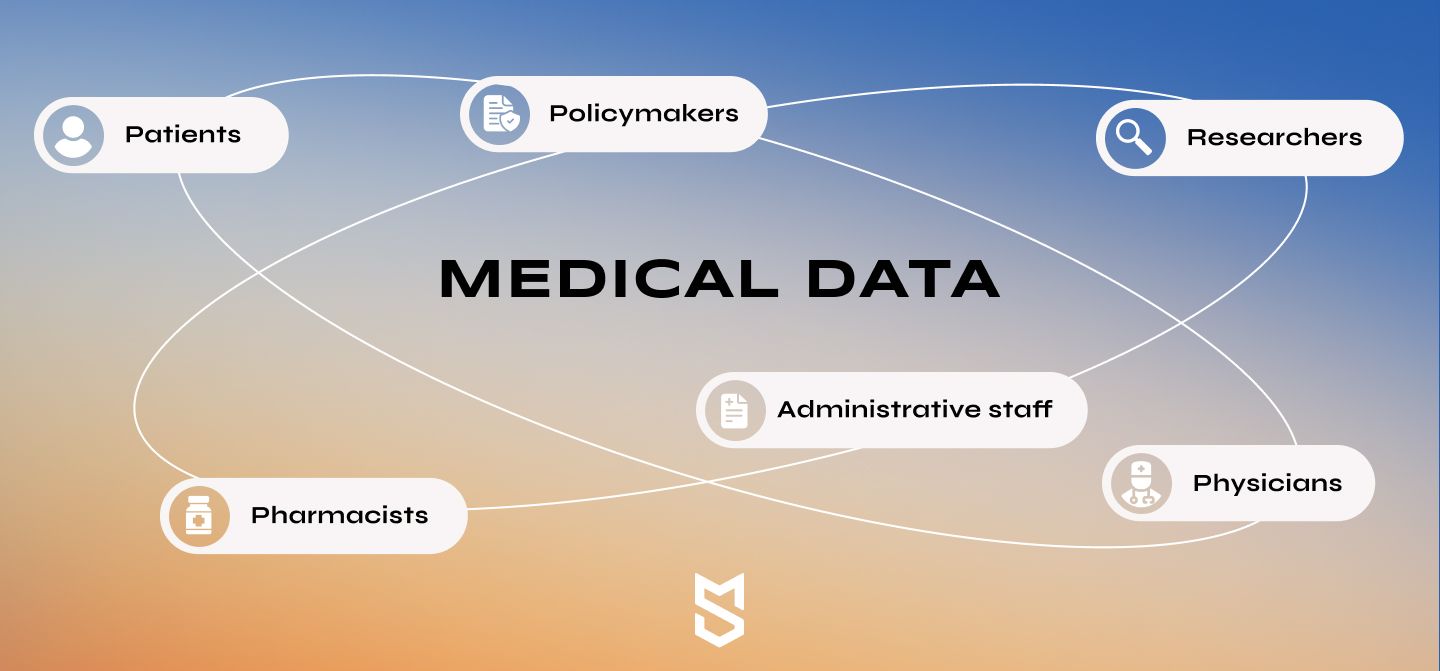
Effective data governance in healthcare enhances collaboration and bridges multiple stakeholders within the healthcare ecosystem, including physicians, pharmacists, administrative staff, researchers, and patients. This alignment facilitates quicker and more precise decision-making, ensuring that essential information reaches the right individuals at the right time.
Imagine a patient admitted to a hospital with a complex medical history and multiple ongoing treatments. Thanks to adequately managed data systems, the patient's electronic health record, test results, imaging reports, and prescribed medications can be instantly accessible to the attending physician and other relevant specialists.
Comprehensive data sharing enables the medical team to effectively and quickly coordinate a treatment strategy for individual patients while avoiding medication conflicts and medical errors.
Other stakeholders within the healthcare ecosystem also benefit greatly from data management solutions. For instance, researchers can access comprehensive datasets for studies and accelerate medical breakthroughs while policymakers gain insights to shape effective healthcare tactics.
Diagnostic improvements and research advancements
Data management enables HCPs to go beyond individual patient care and contribute to global healthcare advancements by using large datasets of aggregated and anonymized information as a resource for medical research.
Let’s get more specific. Consider a scenario where a regional healthcare system implements data management practices. Over time, they accumulate a substantial volume of anonymized patient data. Researchers within the system can analyze it to identify trends, patterns, and correlations between specific treatments, patient responses, environmental factors, etc.
Insights extracted from this data can lead to previously unnoticed links between certain medications, rates of adverse reactions in patients, genetic markers, and environmental factors like local water sources. Such discoveries prompt a revision in treatment guidelines, which results in improved impact on patient care.
Best practices of data management for hospitals
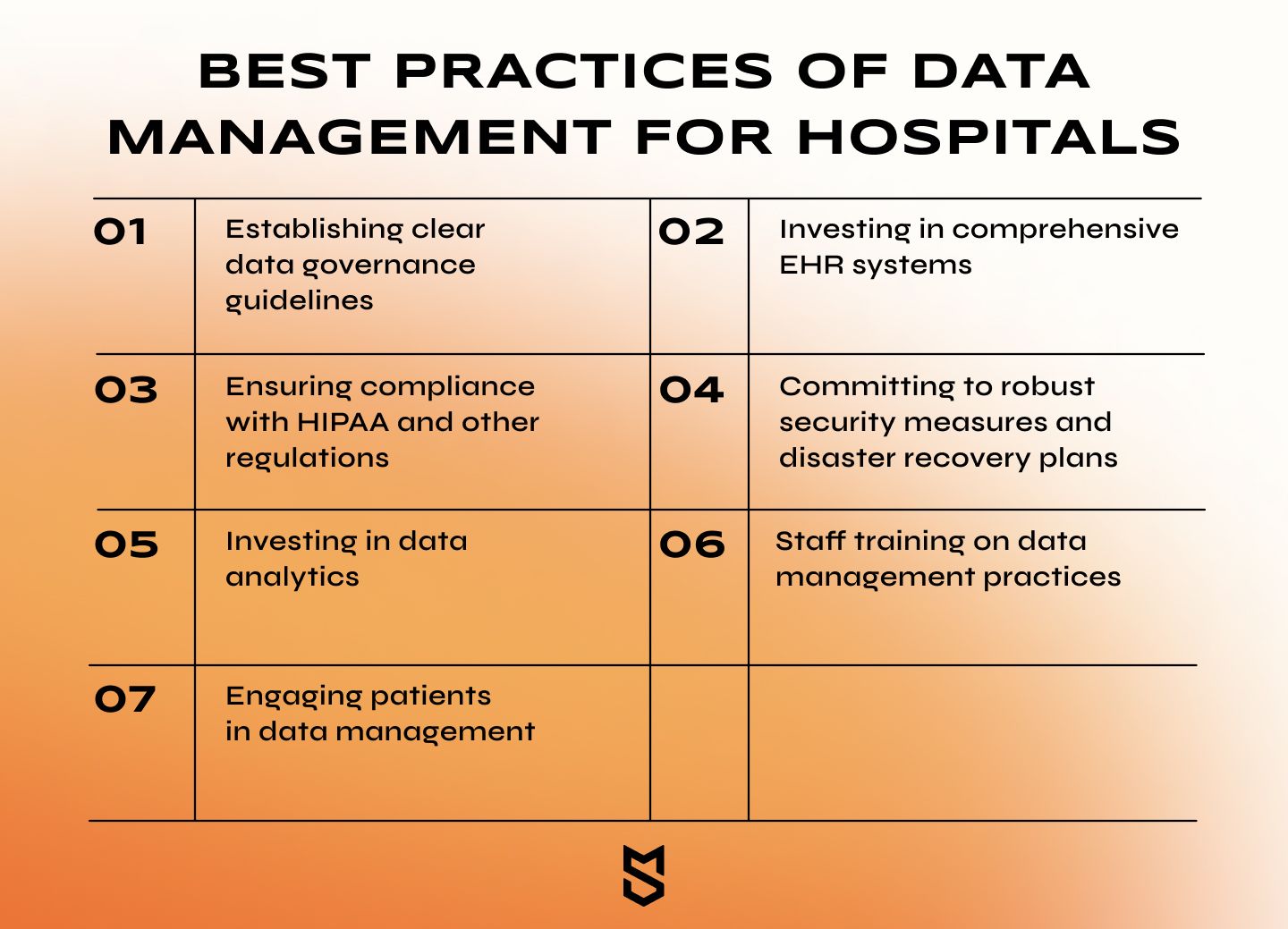
Now that we’ve covered why every healthcare organization needs to commit to robust data management, it’s time to get into how exactly they can do it. Here are the best practices that can help hospitals leverage the power of medical data while being reliable service providers that patients and stakeholders can trust.
Establishing clear data governance guidelines
The first on the list is crafting a comprehensive data governance framework that outlines roles, responsibilities, and processes for data management. These data governance guidelines are essential to provide direction, accountability, and consistency in data-related practices within healthcare organizations.
To be more specific, the framework should outline:
- Roles, such as data owners, data stewards, and data custodians, and their responsibilities for data quality, accuracy, integrity, security, etc.
- Data policies covering data creation, collection, storage, access, usage, sharing, and disposal
- Data quality protocols that overview procedures like data validation, cleansing, and quality monitoring
- Data standards that cover various data formats, naming conventions, coding systems, etc.
- Data security standards, including privacy protocols, access controls, encryption methods, authentication processes
Investing in comprehensive EHR systems
Electronic Health Record (EHR) systems allow healthcare providers to utilize centralized and interoperable medical data, facilitate seamless data exchange between different departments and providers, and streamline operations.
At Mind Studios, we typically suggest our clients integrate their products with Epic, a widely recognized EHR platform. Thanks to its interoperability features, various departments within a healthcare organization and external providers can securely share patient data, ensuring continuous and timely care.
Ensuring compliance with HIPAA and other regulations
Due to the sensitive nature of medical data, healthcare is known for being one of the most strictly regulated industries. Therefore, ensuring compliance with legal regulations is integral to healthcare data management practices.
Building compliant medical solutions and systems typically entails maintaining adherence to regulations like the Health Insurance Portability and Accountability Act (HIPAA) in the US, and other relevant guidelines in different regions around the world.
Laws and regulations like HIPAA contain stringent guidelines that protect sensitive patient data from unauthorized access, breaches, and misuse. These regulations safeguard not only EHRs but basically any other form of patient information, including paper records, in-person communications, etc.
To comply with these standards, healthcare organizations must:
- Implement comprehensive privacy policies and procedures that outline how patient data is collected, used, disclosed, and protected
- Provide regular training to employees on HIPAA guidelines, data handling practices, and security protocols
- Enforce risk assessments, security audits, and regular reviews of contingency plans
Committing to robust security measures and disaster recovery plans
Healthcare data breaches can lead to identity theft, financial fraud, compromised patient care, legal liabilities, and other disastrous outcomes. Therefore, healthcare organizations must embrace strong security measures, which include encryption techniques, access controls, regular audits, security protocols, etc.
However, even those healthcare organizations that commit to robust security measures need to have a backup plan that will allow them to protect data in such cases as system failures, natural disasters, or advanced cyberattacks. We suggest implementing and regularly testing backup mechanisms and disaster recovery plans to prevent data loss.
Regular tech infrastructure updates are also vital for any organization dealing with medical data. In addition to boosting performance, they help increase resilience against cyber threats. Therefore, we strongly recommend regularly revising hardware, software, and security tools.
Investing in data analytics
Accumulating data without extracting meaningful insights from it is pointless, so leveraging data analytics tools is a must for healthcare providers who want to improve the quality of patient care significantly. Such solutions help HCPs analyze trends, patterns, and correlations necessary for clinical decision-making.
For instance, Johns Hopkins Hospital uses AI models to identify patient delirium risks in intensive care units and apply countermeasures to mitigate adverse outcomes. This was possible thanks to analyzing two datasets drawn from 100,000 stays at a Boston hospital's ICU.
Staff training on data management practices
Even with robust security measures, there is always a risk of a simple human error. Comprehensive staff training on clinical data management guidelines is a way to minimize those errors and thus ensure patient data is protected at all times.
Employee training should encompass various aspects of data management, including:
- HIPAA regulations, including the Privacy Rule and Security Rule
- Effective EHR systems utilization
- Data handling procedures, including those for collecting, entering, storing, transmitting, and disposing of patient records and other medical data
- Access controls training highlighting the importance of proper use of authentication methods, passwords, and two-factor authentication
- Cybersecurity training emphasizing the protection of patient data against potential threats
- Device security to teach the staff about securing devices like computers, smartphones, and tablets
- Ethical considerations focused on the importance of data management in healthcare for safeguarding patient well-being and privacy
Engaging patients in data management
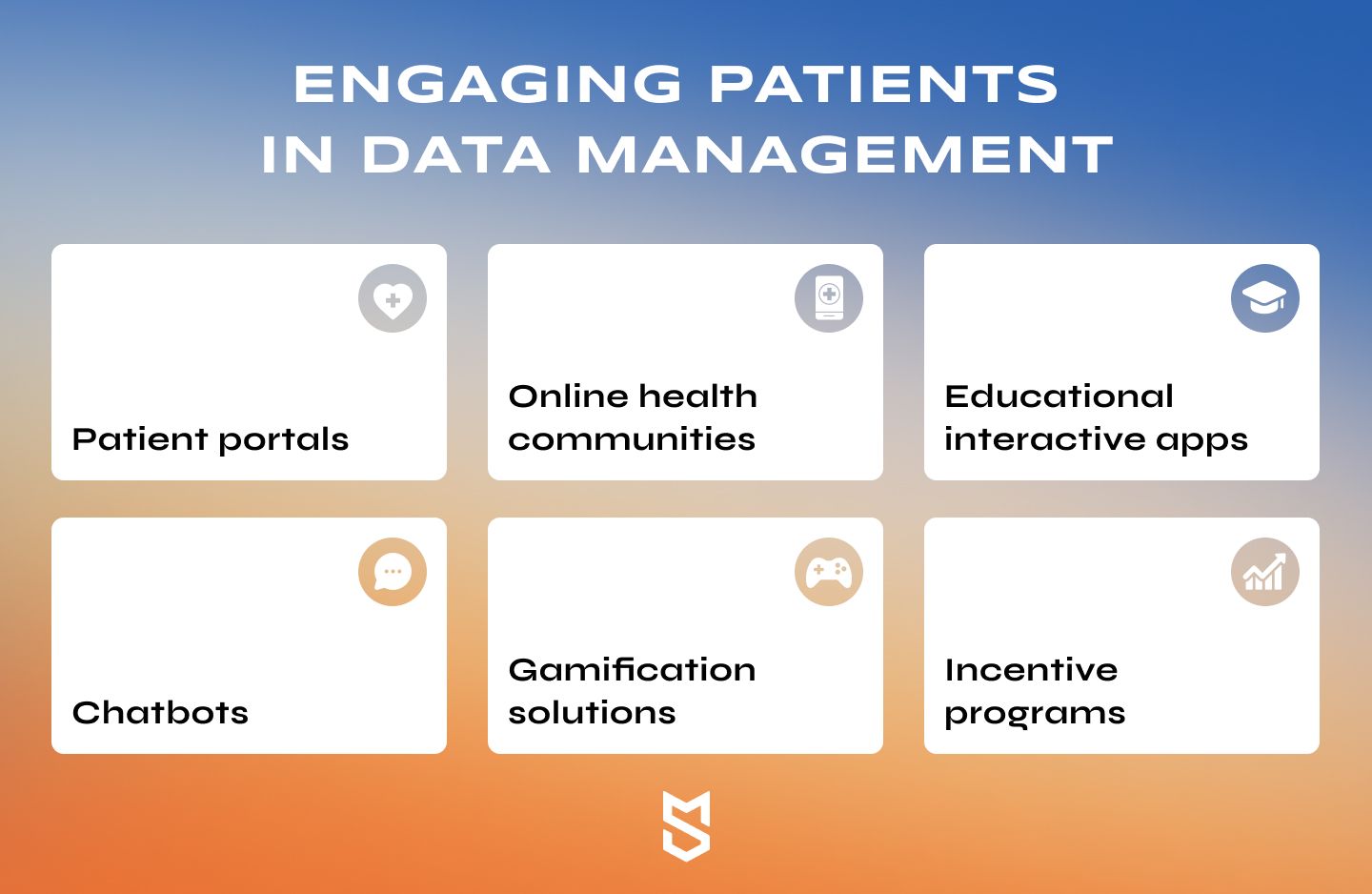
Patients who are aware of their rights regarding medical data management are empowered to control their health and improve the quality of care they receive. The question is, how can healthcare providers increase patient engagement and facilitate education?
The first thing to do here is provide patients with easy access to and management of their health data through patient portals and other engagement tools like online health communities, educational interactive apps, chatbots, gamification solutions, incentive programs, etc.
In addition to launching apps for managing EHRs, doctor appointments, and so on, some healthcare organizations involve patients in collaborative decision-making. For example, the OpenNotes project encourages patients to review their clinicians’ notes from appointments and participate in the shared decision-making process.
Moreover, last year, OpenNotes and the Roger C. Lipitz Center launched the Coalition for Care Partners to strengthen systematic engagement and support for care partners through existing patient portals. As a result, 42% of patients using this option said they share access with their care partners because it helps them manage healthcare activities.
To sum up, in addition to enhancing operations efficiency, adhering to these practices allows healthcare facilities to foster transparency, establish relationships of trust with the stakeholders, and contribute to the advancement of the healthcare industry.
Challenges in health information management
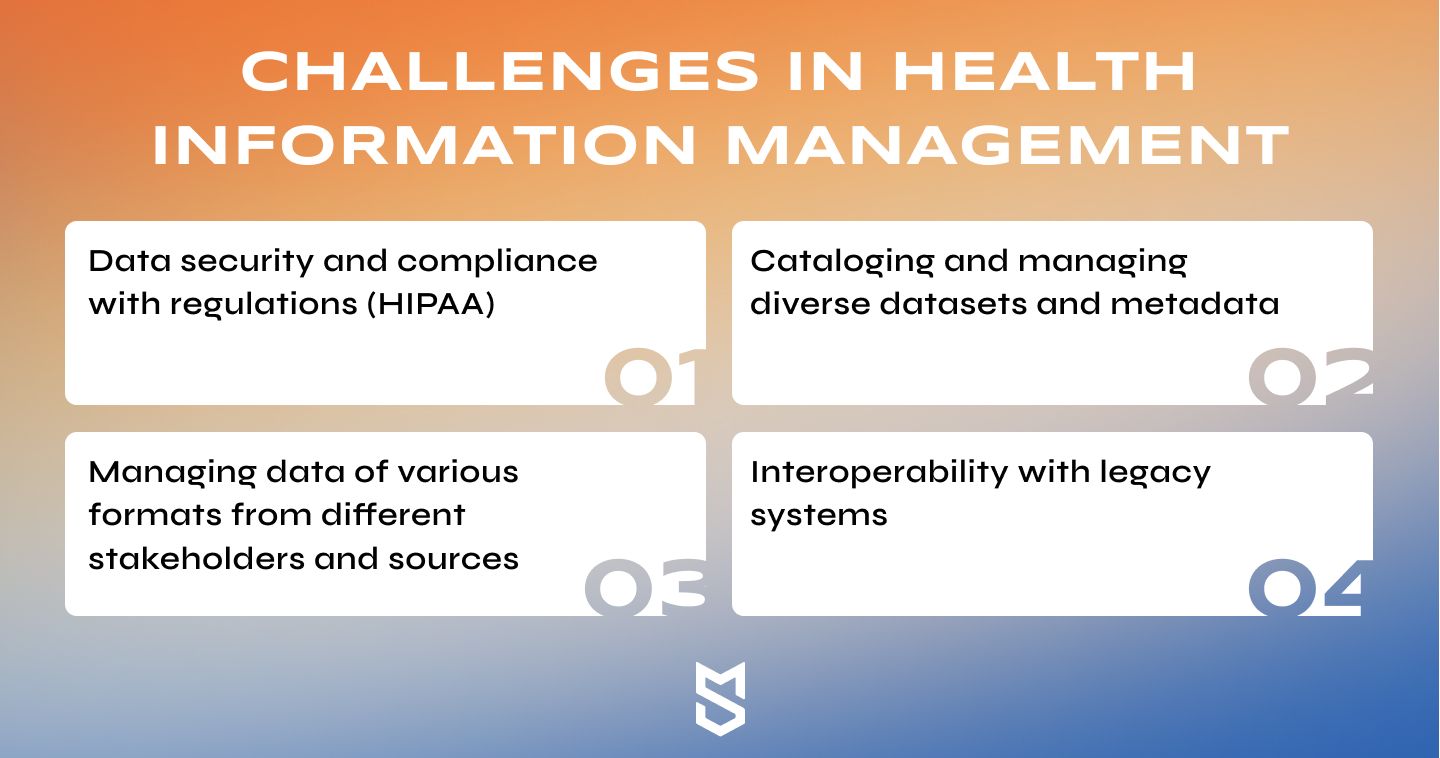
As the healthcare industry transforms into a data-driven ecosystem, managing healthcare data comes with several challenges. The good news is none of them are unsolvable, at least with a skilled tech team by your side. Let’s dive into what these challenges are and how to navigate them.
Data security and compliance with regulations (HIPAA)
The highly sensitive nature of medical information naturally led to numerous legal obligations, including regulations like HIPAA, that healthcare organizations must comply with to protect the data. While meeting those requirements can be painstaking, it does help healthcare providers protect their reputation, ensure patient trust, and avoid legal repercussions.
Tackling this challenge involves implementing robust security measures like encryption protocols, access controls, continuous data quality monitoring, regular security audits and risk assessments, and comprehensive incident response plans.
Additionally, we recommend implementing clear data governance policies within healthcare organizations and conducting regular staff training to improve data management knowledge.
Managing data of various formats from different stakeholders and sources
There are multiple sources and stakeholders medical data comes from, including healthcare facilities, telemedicine platforms, laboratories, pharmacies, patient portals, wearables, public health agencies, and more. The challenge lies in seamlessly integrating this diverse multiple-format data into a comprehensive patient profile while maintaining its accuracy and context.
Moreover, healthcare data is not limited to a single format since it originates from multiple sources like EHRs, medical devices, imaging systems, wearable devices, etc., all of which employ different data standards. This can make it difficult for healthcare providers to analyze and share data cohesively and to gain a holistic view of a patient’s health.
Hospitals must invest in platforms that can handle structured and unstructured data, enabling seamless analysis and interpretation across different data types. They also must establish clear data governance frameworks that address data ownership and adopt interoperability standards like HL7® FHIR® for seamless data exchange.
Sticking to data management guidelines helps healthcare organizations ensure consistent data mapping, cleansing, and validation and thus provide medical professionals with the information needed for informed decision-making.
Cataloging and managing diverse datasets and metadata
Data governance in healthcare involves organizing, categorizing, and managing a wide range of datasets, each carrying unique metadata with specific attributes and contextual information. The datasets are generated across multiple healthcare sectors and processes in various forms, including patient records, medical images, clinical trials, and research data.
The challenge here lies in organizing and managing this data through cataloging, indexing, and storing methods, ensuring that it accurately reflects the context and data sources. If a healthcare organization fails to manage these datasets properly, the healthcare professionals will face difficulties locating and accessing the data when needed, directly affecting patient care.
To address this challenge, we suggest incorporating data catalogs and metadata management practices, which include:
- Implementing a centralized data catalog that indexes and categorizes all datasets and includes comprehensive metadata that describes the datasets' attributes, sources, and context
- Utilizing automation tools, semantic indexing, and advanced metadata tagging to enable easy data search and retrieval
- Using metadata management tools to ensure consistency and accuracy of metadata across the organization
- Choosing suitable storage solutions like cloud-based platforms or on-premises systems that can handle the volume and variety of healthcare data while providing scalability opportunities and ensuring security
Interoperability with legacy systems
Let’s say, a hospital with software that hasn’t been significantly updated for over ten years wants to improve data management processes. Legacy systems are often likely to have been developed with older technologies and proprietary standards. Therefore, ensuring smooth data flow, compatibility with newer systems, and seamless communication between different parties can be challenging for the IT team. Yet, it’s not a challenge impossible to solve.
Tackling interoperability challenges in healthcare requires employing middleware solutions, APIs, and data transformation tools to bridge the gap between legacy and modern systems. This will allow the team to enable secure and consistent data exchange while gradually switching toward a more unified modern healthcare IT infrastructure if an instance transition is impossible.
Three options for data storage for hospitals
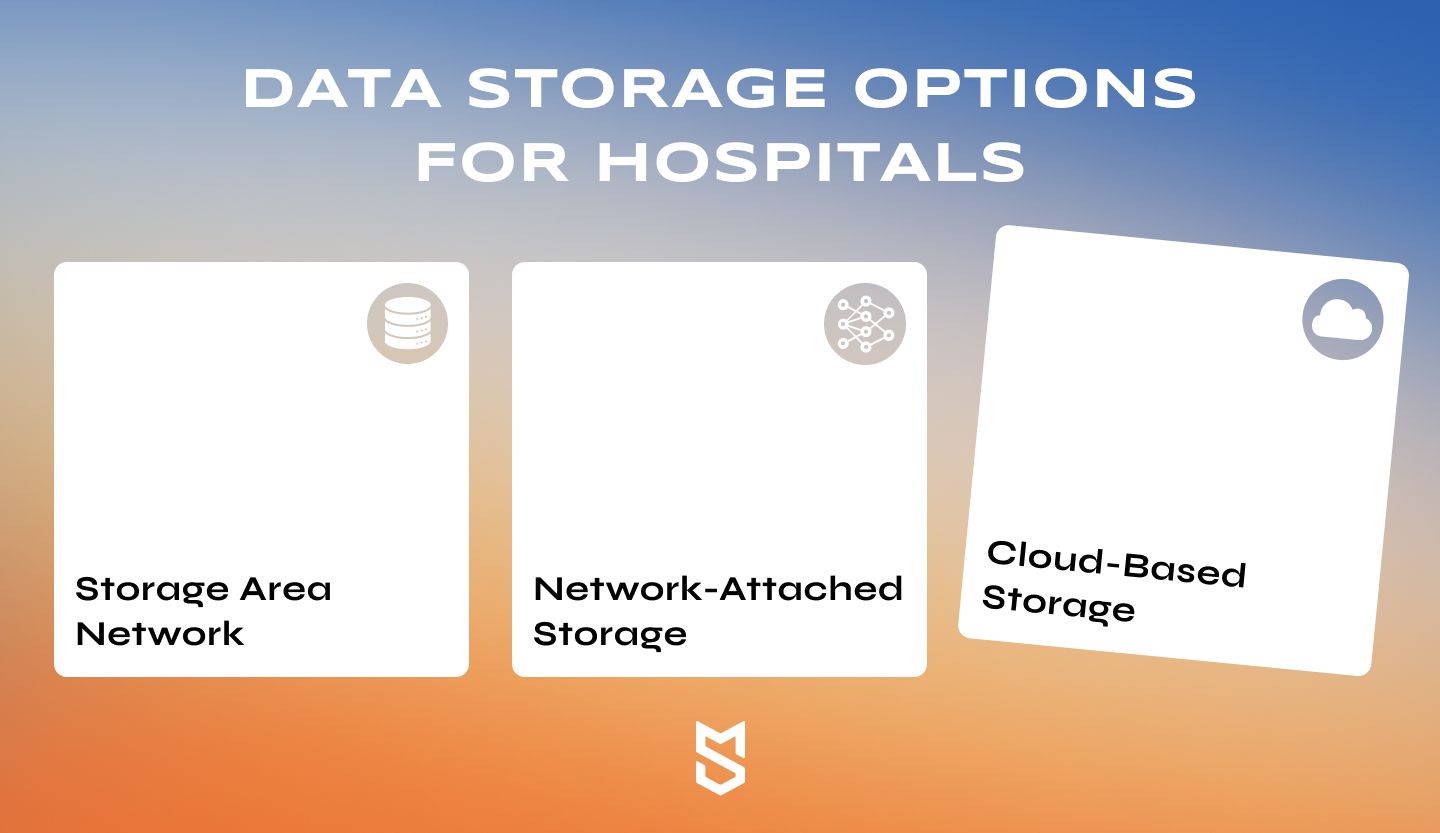
Depending on data needs, financial resources, regulatory obligations, and existing IT infrastructure, healthcare providers can choose from several data storage options. While each comes with its own advantages and considerations, the following three solutions can be a good choice for hospitals with different data management needs.
1. Storage Area Network
A Storage Area Network (SAN) is a centralized, high-speed network that provides a pool of shared storage for multiple computers and servers to acces. SANs ensure high-speed access to storage resources and facilitate efficient data retrieval and backup processes.
In the case of healthcare, SANs allow transferring medical data directly from storage to workstations without disrupting the work of hospital servers. This option is especially well-suited for facilities dealing with mission-critical applications and databases requiring fast and reliable access to data.
Pros
- High performance: SANs offer rapid data access and support data-intensive operations.
- Scalability: Hospitals can expand storage capacity without significant disruption.
- Centralized management: SANs provide a consolidated platform for efficient storage management and data protection.
Cons
- Complexity: Setting up and managing a SAN can be tricky and may require specialized skills.
- Cost: Initial hardware and maintenance investments can be higher than other options.
2. Network-Attached Storage
Network-Attached Storage (NAS) is a storage solution that provides data access to all the devices on the network. It can be connected to an existing hospital network, functioning as a standalone file server.
The NAS option is suitable for hospitals seeking a simplified and budget-friendly solution for file sharing, data backup, and remote access.
Pros
- Ease of use: NAS systems are relatively easy to set up and manage, making them great for smaller hospitals with limited IT resources.
- Cost-effective: NAS systems can be a more budget-friendly solution compared to SANs.
- Centralized file sharing: NAS provides a centralized location for storing and sharing files among hospital staff, departments, and teams, which is particularly useful for documents, reports, administrative files, and non-clinical data.
- Scalability: Many NAS solutions are easy to expand when the healthcare facility’s data needs grow.
Cons
- Performance limitations: NAS solutions don’t offer the same performance capabilities as SANs for data-intensive applications.
- Limited flexibility: NAS systems are optimized for file-based access, which might not be ideal for certain types of data.
3. Cloud-Based Storage
Cloud-based solutions involve storing data in off-site data centers managed by third-party providers. Hospitals increasingly turn to this option to cut data maintenance costs and leverage the flexibility this option offers. In fact, the healthcare cloud computing market is so promising it is expected to be worth $89.4 billion by 2027.
Pros
- Scalability: Cloud storage can easily accommodate changing data storage needs without significant upfront investments.
- Accessibility: Data stored in the cloud can be accessed from anywhere with an internet connection.
- Disaster recovery: Cloud providers typically offer solid data redundancy and backup solutions.
Cons
- Data security and privacy concerns: Hospitals must carefully select reputable cloud providers that commit to data security and regulatory compliance.
- Bandwidth limitations: Uploading and retrieving large amounts of data from the cloud can be constrained by available network bandwidth.
- Long-term costs: While cloud storage can be cost-effective in the beginning, long-term expenses can accumulate as data volume grows.
If you can’t choose between the performance-oriented SAN, the user-friendly NAS, or the flexible cloud-based storage, our team can help you align the storage choice with your data management needs and strategic goals.
Conclusion
Approximately 30% of the world’s data volume comes from the healthcare industry. By 2025, healthcare data's CAGR (compound annual growth rate) will be 36%, which is 11% faster than media & entertainment.
While this massive amount of data gives boundless opportunities for healthcare system evolution and medical advancement, the responsibility that comes with safeguarding it is just as great. Healthcare organizations must commit to modern data management practices to maintain trustworthy relations with their patients and all the stakeholders involved.
The constant threats like data breaches and challenges like HIPAA compliance might be overwhelming. However, Mind Studios is ready to help you implement tailored data management solutions and harness the potential of healthcare data while protecting patient privacy and ensuring data security.
Whether you want to enhance your system with data management tools or audit existing solutions, we’ve got you covered. Just fill in a short contact form, and our team will arrange a free consultation to discuss the data governance needs of your organization.

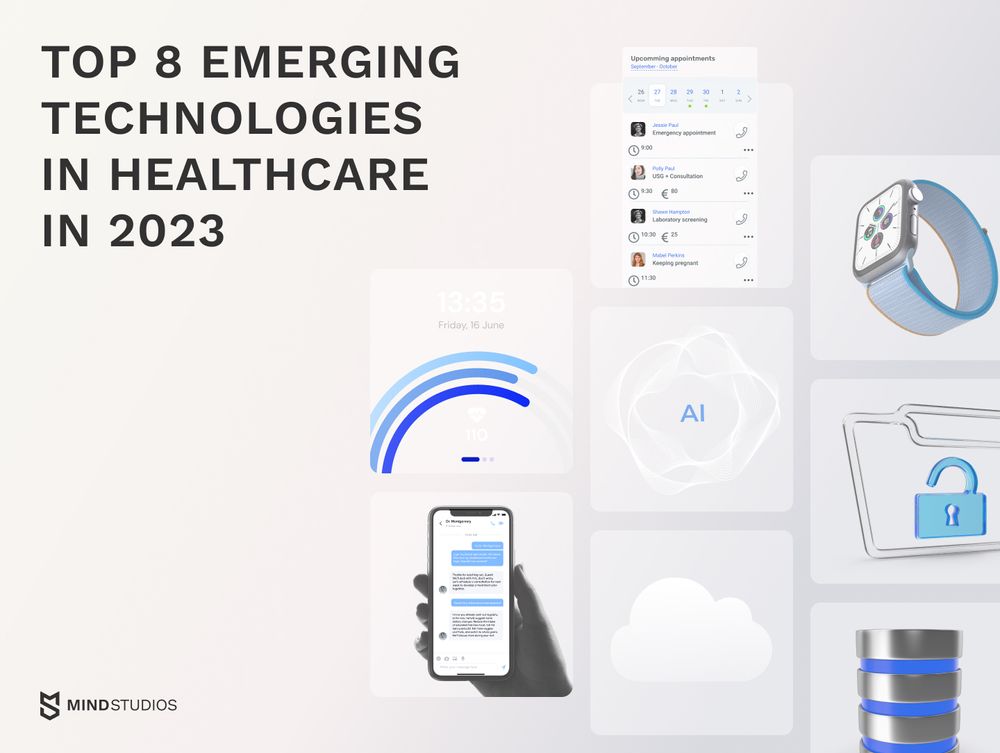
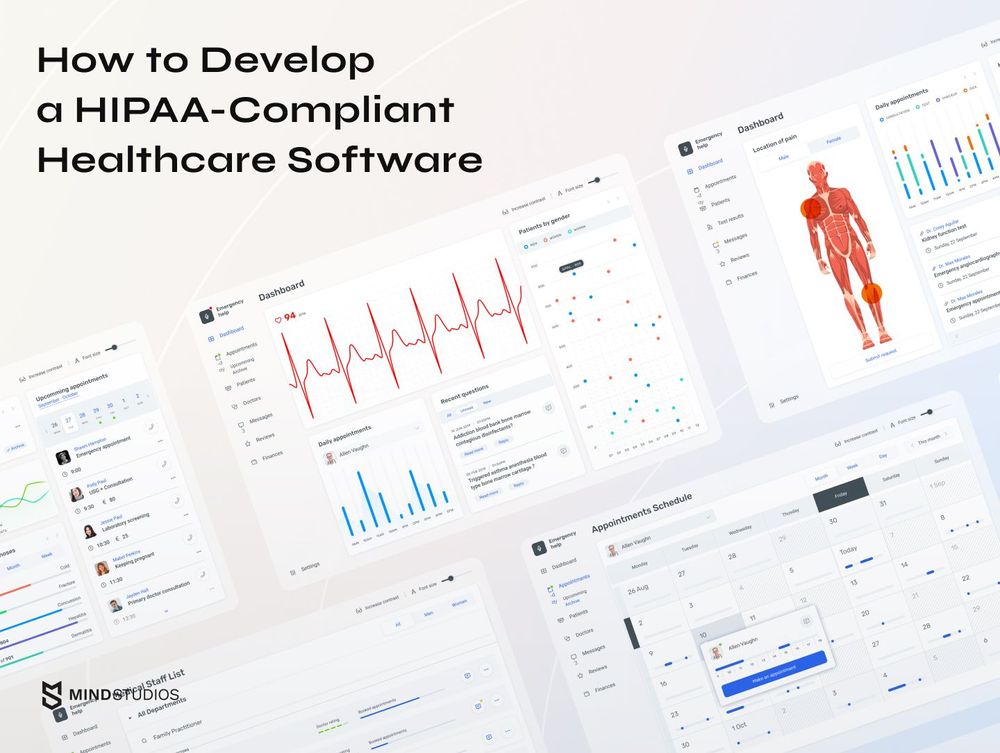
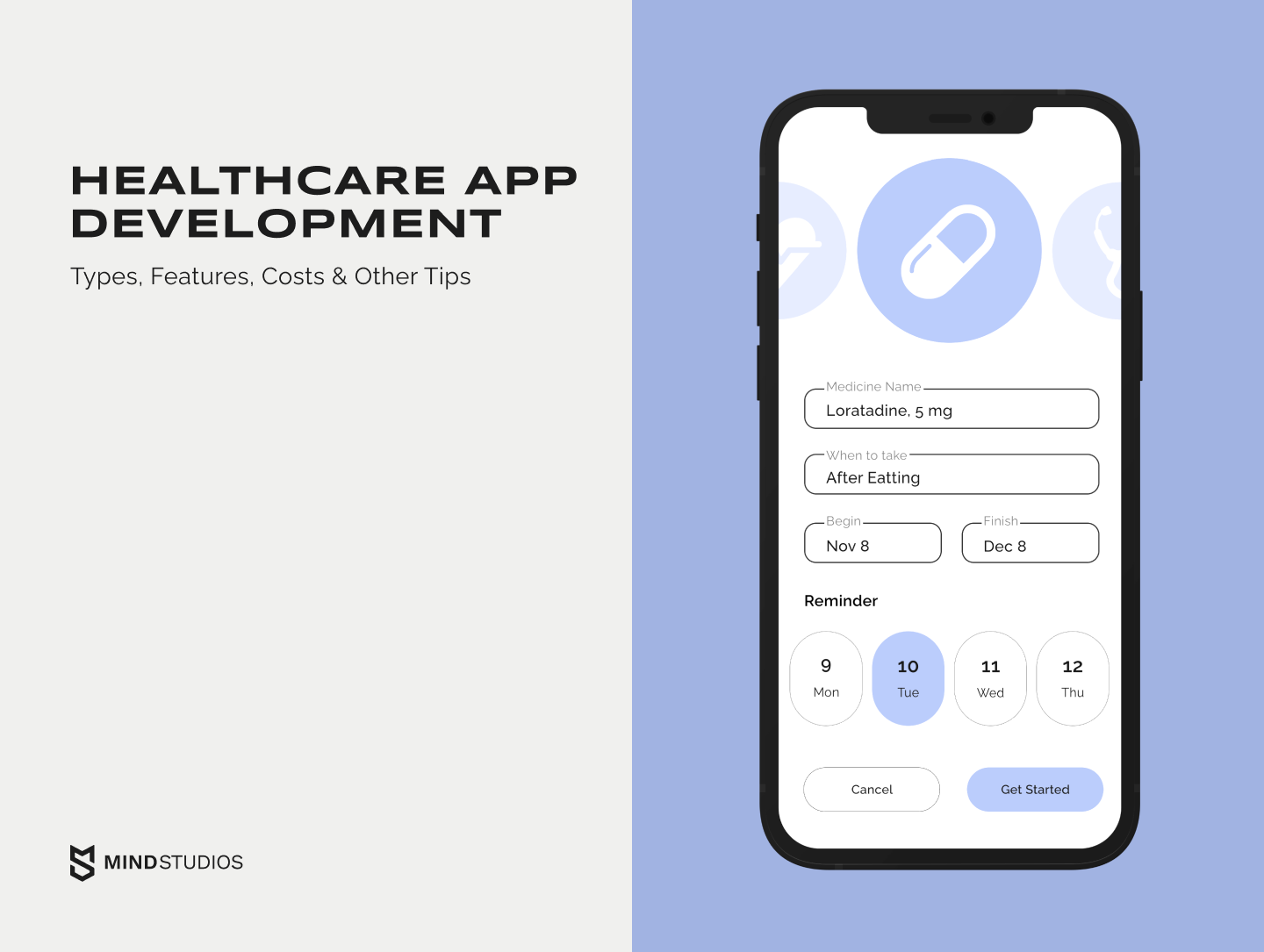
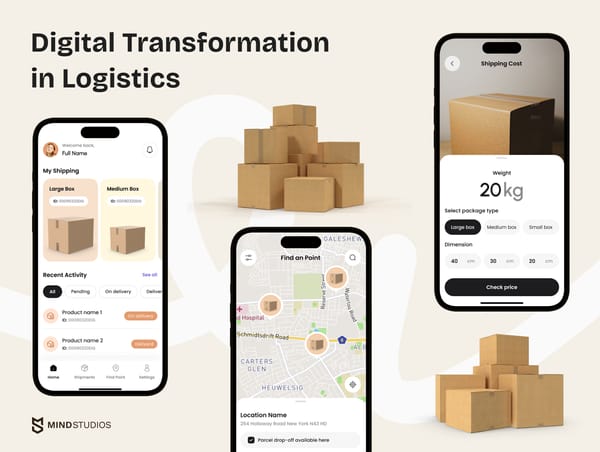
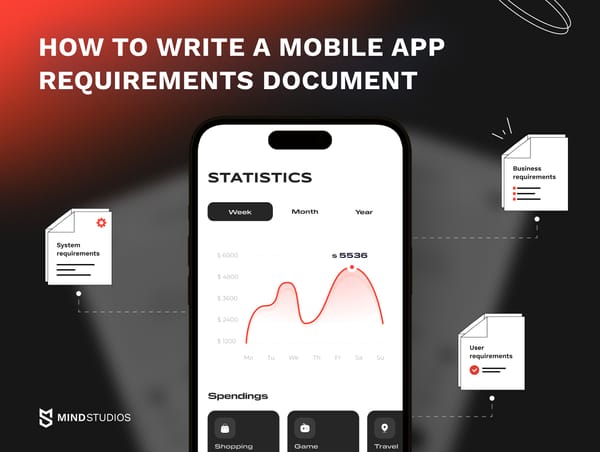

![How to Create an On-Demand Medicine Delivery App [Expert Guide]](https://themindstudios.com/blog/content/images/size/w600/2025/03/IMG-1-Cover-6.jpg)


